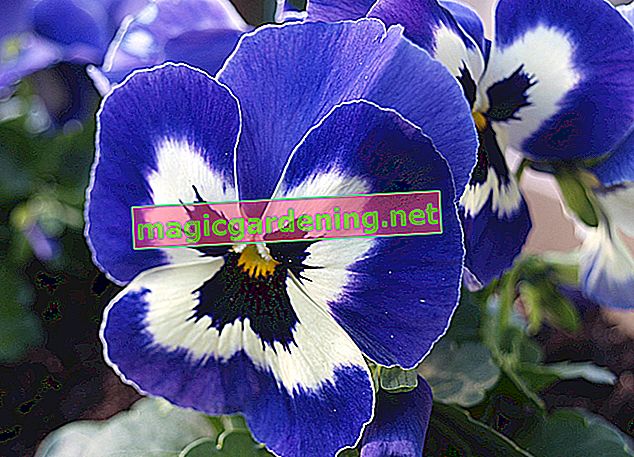
The violet is a perennial herb with ascending stems, notched leaves and mostly multicolored flowers, from which capsules later form. The viola's petals are edible. The violets were already mentioned in the herbal books in the 16th century as a diuretic or z. B. recommended for skin problems. They were offered in pharmacies until the beginning of the 20th century.
also read
- Pansies - the first heralds of spring on the balcony
- Pansies are biennial or perennial
- Variety of varieties - pansies come in almost every color
Two viola species most frequently found in gardens and as balcony plants are the garden pansies and the horned violets. The garden pansy is the large-flowered cultivation from different viola species, such as B. Wild pansy (Viola tricolor), Altai pansy (Viola altaica), yellow violet (Viola lutea). With the huge selection of varieties, the decision is not easy:
- classic in white, yellow or purple,
- exotic in midnight blue, wine red or bright orange,
- delicate in light pink or blue,
- spotted, striped, flamed, bordered, filled,
- with or without a black eye in the middle.
Garden pansies and horned violets are different
Most noticeable is the size difference. While the open flowers of the garden pansy are about 5 cm in diameter, the horny violet flowers are max. 3.5 cm much more delicate. The flowers consist of five petals, with pansies four petals pointing upwards and one petal pointing downwards and with horned violets three of the petals pointing upwards and two pointing downwards.
The horned violets are mostly perennials. The garden pansies are usually two years old and die after flowering. Before that, they can seed themselves at the appropriate location. The horned violets are cut back and divided after flowering to keep the plants strong and long-lasting. These two types of viola are easy to care for, frost-resistant and not prone to pests and diseases.
Tips & Tricks
In Germany there are over twenty types of violets in nature, including dog violets, march violets, forest violets and spur violets.








